A village in Illinois forges a park from weeds and waste
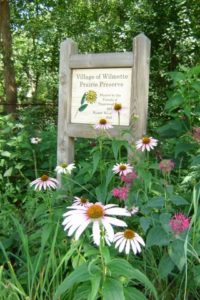 Let us take you back to the beginning. In 1998, in the small village of Wilmette, Illinois, a three-city-block long, 20-foot-wide strip of woodland is unattended and derelict. It has succumbed to invasive vines, weeds and non-native trees, and is a convenient dump for yard waste, dead trees and litter. To its neighbors, Susan Gaines-Gatto and husband Dom, it is a thorn in the eye.
Let us take you back to the beginning. In 1998, in the small village of Wilmette, Illinois, a three-city-block long, 20-foot-wide strip of woodland is unattended and derelict. It has succumbed to invasive vines, weeds and non-native trees, and is a convenient dump for yard waste, dead trees and litter. To its neighbors, Susan Gaines-Gatto and husband Dom, it is a thorn in the eye.
In many towns, eyesores remain just that, but when a community is lucky enough to have people like the Gattos, such conditions become opportunities. In the elastic minds of the Gattos, the land was a vagabond begging for clean up and intent. The Gatto’s passion for gardening and for the environment suggested a transformation. What about a new community park? It would take a lot of support! But what you can’t know is this. Susan is a woman who has the long-ago gravitational pull of the moon! Help flowed in.
The village urban forester, Kevin Sorby, identified the existing trees by their botanical names, and guided decisions about removal vs retention. Then, armed with ‘don’t mess with me’ tools, donated waste bags and wood chips, community volunteers bullied much of the existing, sometimes stubborn vegetation into submission.
With recommendations from Midwestern native plant specialist and author, Charlotte Adelman, the land was slowly enhanced with increasing numbers of native trees and perennials rather than exotic ones. Charlotte also suggested the ecological value of saving some dead trees. She walked the talk by donating all of our Wildlife Tree signs. They are now affixed to a couple of safely retained dead trees and a downed log. Today bewildered residents are bewildered no more. They understand why every dead tree was not hauled away.
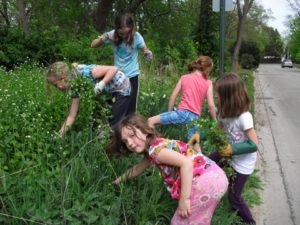
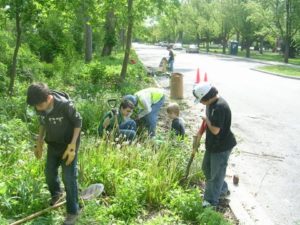
Over the long, hard years, Susan, the village moon, pulled in the village youth. They doggedly served as ‘get-down-and dirty’ trail blazers!’ Among them were their own two sons, other Harper School youngsters, and others who needed to do community service. Over time, hundreds of Scouts from Troops 5 and 9, and nine Eagle Scouts invested hard, courageous labor. One such Eagle Scout, Daniel Hom (pictured below with Susan), raised $500 for the purchase of native perennials.
The Scouts are still at work. Susan says, “Each Scout is fortunate if he can clear and improve about 200 feet, and also plant new perennials, all in one work day.” She explains that the Scouts deserve much credit for a trail featuring its environmental value, opportunities for education and exercise. Today the old vagabond land is named Thornwood Park Prairie Preserve. Its on-going transformation forges new friendships and community pride.
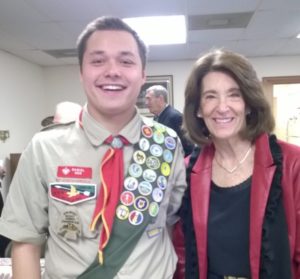
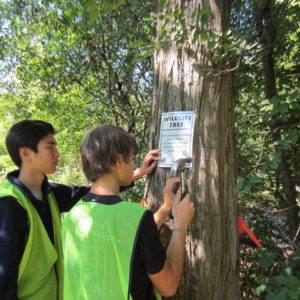
Witness what this exemplifies. A visionary, can-do mind is owned by people virtually everywhere, even in small villages in the Midwest. When fellow residents galvanize to join them in a worthy project, infinite possibilities abound and communities benefit.


Connect
Connect with us on the following social media platforms.